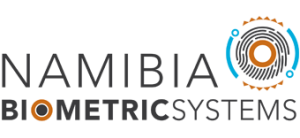Namibia Biometric Systems’ Banking Solution
This article is motivated by the work conducted by researchers within Biometric Research Laboratory, BRL, at Namibia Biometric Systems on biometric solution for banking. The work is motivated by the growing interest in the deployment of biometric solution in banking and to minimize error rates during the implementation phase. Researchers at BRL discovers interesting results in the deployment of biometrics in banking: cash machine cards are becoming a thing of the past following the launch of new biometric Automated Teller Machines, ATMs, which let users withdraw money simply by pressing their biometrics that identifies them from the unique biometric pattern. The research conducted by BRL makes the days of fumbling with desktop card readers, phone authentication and PIN codes a thing of the past. The biometric solution can incorporate a suitable personal biometric scanner to keep your internet banking security firmly under your biometrics which you will never forget. The aim of the research at BRL is to replace the costly chip in bank cards with an individual’s biometrics and eliminates the following limitations:
Card chip production – It costs banks a significant amount of money to pay for the chips used in the current bank cards. The cost of chip production is generally passed down to customers in various ways. Banks have to buy chip from chips manufacturing companies who also need to make a profit.
Bank Card Production – It is important for consumers to release that banks also have to pay card manufacturers for the production of the banking cards who also need to make a profit. It is not a surprise that the cost is passed down to the clients in various forms.
Bank Chip and card integration – the integration of the chip and bank card requires specialised skills to ensure the integrity of the card.
The Return On Investment, ROI, is substantial in banking for 3rd world countries if implemented within suitable guidelines and standards. However, researchers at BRL are keen to emphasise that in every country banks are different and may require specific consultation.
The proposed biometric solution for banking by BRL is characterised as follow:
- It captures additional information such as demographic data like date of birth, present address, National Identification/ passport, marital status, education, etc.
- It ensures that each customer has the relevant products such as saving accounts, fixed term deposits, etc.
- It ensures accurate processing of salary and wage slips.
- It ensures accurate processing of the senior citizen’s pensions.
- It ensures a reduced monthly fee which is automatically deducted.
Researchers at BRL have independently identified and assessed the best biometrics for banking solutions using international standards from different vendors. Researchers at BRL are keen to stress the importance of utilizing biometric standards and the best practice when implementing biometric based solution.
More information on the implementation of biometric based solution for banking can be obtained via a requested from info@namibiabiometricsystems.com.
